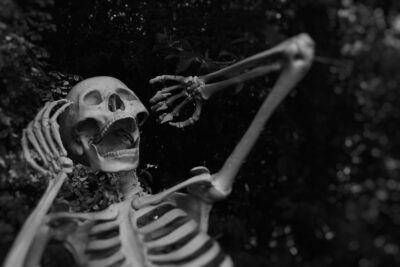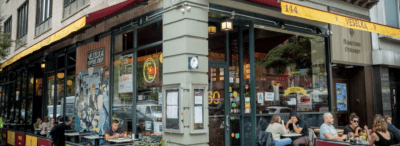Summer Museum Preview
Here’s a selection of current and forthcoming exhibitions worth adding to your summer calendars. A few of them will even allow you to take in some sun. A couple might give you reason to take tissues with you. For now, though, just take notes.
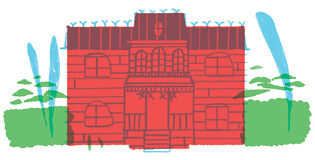

Metropolitan Museum of Art
Cornelia Parker: Transitional Object
One thing you should look forward to every year as spring transitions to summer is news of what the Met will soon be exhibiting on its rooftop terrace. It’s always a winning display in one way or another, and even if that weren’t consistently true, heading over and up there to see it still leaves you in most agreeable, green, often breezy environs—and not least importantly, on a roof, where it’s also possible for you to find yourself sipping on the not unimportant likes of beers and cocktails. At any rate, the aesthetic fare this year, an ambitious work by Cornelia Parker, is what will appear to be an entire house perched on a hill. For even if it’s not an actual house actually perched on a hill—and leaving aside the fact that it’s perched on a massive edifice, which isn’t really unlike a structural hillock—it will likely make you think of other houses perched on other hills, such as one in a painting by Edward Hopper, or another made famous in the movie Psycho. If you visit the Met’s website to get a video primer on Parker’s project, you’ll learn that one of those houses inspired another, and you’ll hear the artist share a certain thought that might stick around in your mind, too: “The inverse of the cliché is the most unknown place.” A great one to chew on, no? The roof always closes before the museum proper, so when you head back in, make sure to check out Turner’s Whaling Pictures. Here’s one reason: Turner. Here’s another: Whaling ships. Done and done. Godspeed.
Through October 31st

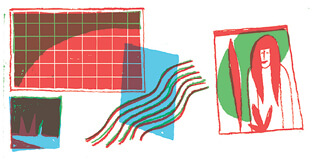
Louise Lawler: WHY PICTURES NOW

Louise Lawler is one of those artists whose work has somehow always registered as exquisitely prescient. Working in a full range of photographically-inspired if not always thusly-based media—and with a critical eye turned to the art world in general and to artworks in particular, as well as to individual artists and collectors themselves—Lawler was conceiving and realizing four decades ago the kinds of projects that seem like they were cooked up just yesterday, or that might even be better understood in some tomorrow. WHY PICTURES NOW will be a gathering of photographic works, sound art, informative objects and related ephemera, some of which will be “adjusted to fit” their immediate environs and our times alike. [Correction: Summer 2017 exhibition. — Ed.]
The Jewish Museum
Beatriz Milhazes: Using Walls, Floors, and Ceilings
It looks like bursts of confetti, charms and gems. It looks like a celebration of pinks, whites and perky pastels. It looks like strands of playfulness dangling all about. It also looks not unlike a materially confounding apotheosis of wedding cakes. It looks like many other things, too, but I’ll leave further metaphorical reflection up to you. Because Milhazes’s grandiose installation in the museum’s entrance lobby, visually informed by the colorful explosions and material otherness of Carnaval do Brasil, is also just a whole lot of fun to look at. So go and do just that.
Through September 18th

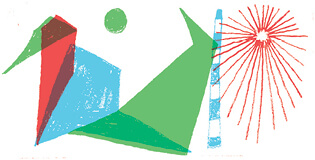
Virginia Overton: Sculpture Gardens

Much of Overton’s work is site-specific, and much of it has also, over the years, pertained in one way or another to bringing the outdoors into interior spaces—and vice-versa, to some extent—so it will be very interesting to see how this artist molds the yields of her conceptual practice into the space of The Whitney’s terrace and a couple light-filled galleries. Windmills will be involved, evidently, as will imagery of the American Southwest. And pneumatic pumps, it seems, and aquatic flowers. All in a piece by an artist long inspired by minimalism. Sounds like it will be a great show to stand around in, absorb, unpack.
Opens June 10th


Genesis Breyer P-Orridge: Try to Altar Everything

Breyer P-Orridge’s artistic practice is of the mind and of the body, of the world and of the cosmos, of mundanity and of sublimity, and of people, gods and intermediaries. H/er work is informed by evolution and inclusion, growth and totality, change and consistency, confluence and fluidity. It is also beautifully and brutally honest, and a consistently inspired celebration of objects as they are, of language as it could be, and of life as it perhaps should be: individualized and open, real and ethereal, grounded and floating. Curated by Beth Citron in the wake of an inspiring encounter with the artist, Try to Altar Everything is one of the most conceptually cogent exhibitions in town right now, so be sure to read up on it a bit before or when you visit. What you’ll likely glean is that the show is also audacious and genre-bending on many levels, and that it marks a splendidly fresh direction for the Rubin’s program of showcasing contemporary art. Breyer P-Orridge’s show could only feature more heart if the space were filled with cardiograms. In a sense, though, it is.
Through August 1st
New Museum
Goshka Macuga: Time as Fabric
Digital media in general, and perhaps even social-media-related practices or performance, might seem like the go-to modes of art-making and presentation for work related to politics, social movements, broad-scaped cultural critique, narrative messaging and archival research, but Macuga deals with such themes via the much more storied tradition of textile art. In Time as Fabric, the London-based artist of Polish origin presents five large-scale tapestries in a kind of interactive ’theater’ setting so as to not only present a visually cohesive sphere in which viewers mingle around in one another’s acts of looking, but to also wrap her visitors up in a ‘historical’ set piece of spectatorial simultaneity. Also take note of another exhibition scheduled to open this July, The Keeper, which sounds like it might contain everything from trinkets and almost passively collected bric-a-brac, to museum-like preservation of items of both public and private reverence. A hoarder’s dream, in other words, or a minimalist’s utter nightmare. A perfect show for this tall metropolis of microcosmic immensities and collectible everythings.
Through June 26th. The Keeper opens July 20th


Roz Chast: Cartoon Memoirs

There’s probably not much I need to say to sell you on the idea of visiting one of the city’s more intimate institutions to basically laugh your face off, right? Well, not if I tell you that the artist whose works you’ll be more than mildly amused by is none other than Roz Chast, the New Yorker cartoonist whose style, characters, folkishly dark humor and endearing candor are so firmly hers that her name alone is a viable adjective—for certain fans, at least, when describing certain people, events, conversations, settings, street corners, diners, subway cars and so on. On that note, here’s an idea: Propose visiting the show to someone with whom you’re planning, say, a second or third date, someone you’re not sure you like enough to keep spending time with, someone you’re not yet hanging out with at night because of all the things that nocturnal encounters seem to imply. Maybe the date will start off really sweet, as you both laugh at all the comics, and then maybe it all turns super awkward, and maybe you both get really uncomfortable, and maybe then you make up some total bull to not hang out longer after you leave, and maybe you’re both relieved by the thought of never seeing one another again, and maybe that will all seem so funny as you walk away that you end up crying all the way home on the subway. That would be so Roz Chast.
Through October 9th
Illustrations by Eddie Perrote
You might also like 














